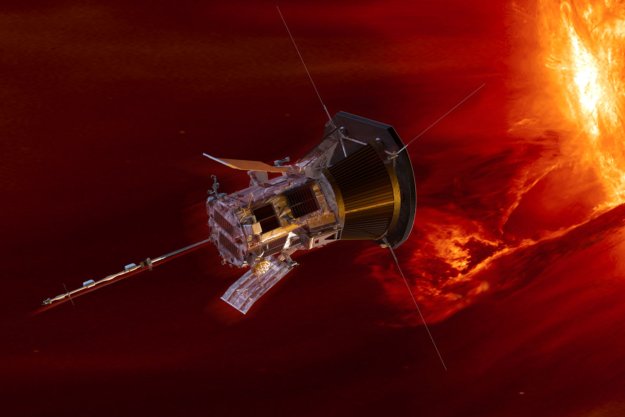You might have read some breathless reports recently about how the sun’s activity has been dimming toward a “solar minimum,” and how this could even cause problems like droughts or famine on Earth.
But there’s no need to panic: The sun is just fine and it’s not about to kick off a new ice age. Here’s what you need to know about a solar minimum:
The sun’s cycle
The sun varies in how brightly it shines over time, in a roughly predictable 11-year pattern called a solar cycle. As well as increasing in brightness at certain points during this cycle, the sun also shows a higher number of sunspots (dark patches on the surface of the sun) and solar flares.
Included in this cycle are regular periods of low sunspot activity called solar minimums.
During these periods, the sun does not become less active but rather becomes active in different ways, such as increased development of long-lived coronal holes. That makes these periods of interest to astronomers, and scientists are still figuring out exactly how the sun’s activity is related to phenomena like space weather.

It’s true that we are currently in a solar minimum, and that the minimum is forecasted to last longer than usual, just as it did in the previous solar cycle. But sunspot activity has not ceased entirely — in fact, two new sunspots were recently identified by NASA’s Solar Dynamics Observatory.
Entering a solar minimum doesn’t mean that the sun is about to stop shining, and it’s unlikely to have any impact whatsoever on life here on Earth.
A somewhat exasperated blog post by NASA’s Global Climate Change team says, “There is no impending ‘ice age’ or ‘mini ice age’ to be caused by an expected reduction in the sun’s energy output in the next several decades.” It explains that the sun goes through a natural cycle of activity, sometimes outputting more energy with many sunspots and sometimes less with fewer.
On occasions, the sun’s activity does dip to lower levels, in an event called a Grand Solar Minimum. The last Grand Solar Minimum was in the late 1600s, and coincided with a time of cooler global temperatures called the Little Ice Age.
But this drop in temperatures was related mostly to a rise in volcanic activity. A totally different set of factors affect the planet today.
So even if we were in a new Grand Solar Minimum, there’s no need to panic.
“Even if a Grand Solar Minimum were to last a century, global temperatures would continue to warm,” NASA says. “Because more factors than just variations in the sun’s output change global temperatures on Earth, the most dominant of those today being the warming coming from human-induced greenhouse gas emissions.”
NASA emphasizes that global warming caused by greenhouse gas emissions from the burning of fossil fuels is six times greater than any cooling which could be expected due to a Grand Solar Minimum.
So you should be worried about the Earth, not because the sun is going to kick off a new ice age, but rather because of the devastating impact of climate change.
Editors' Recommendations
- What kind of view will ISS astronauts get of the solar eclipse?
- Solar Orbiter and Parker Solar Probe work together on a puzzle about our sun
- Horrifying up-close images of a sunspot captured by the Inouye Solar Telescope
- See the ‘quiet’ of the sun’s corona in Solar Orbiter footage
- See the horror of the sun up close from world’s most powerful solar telescope




